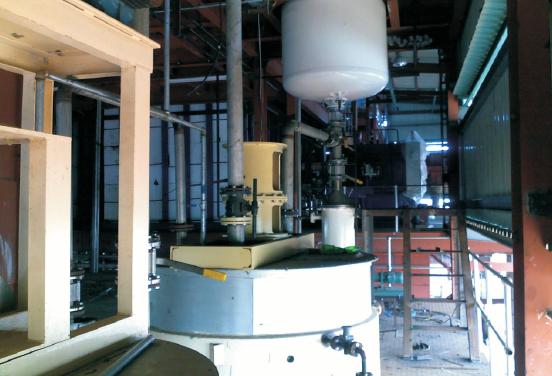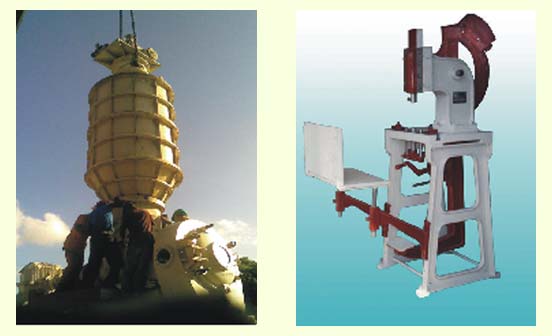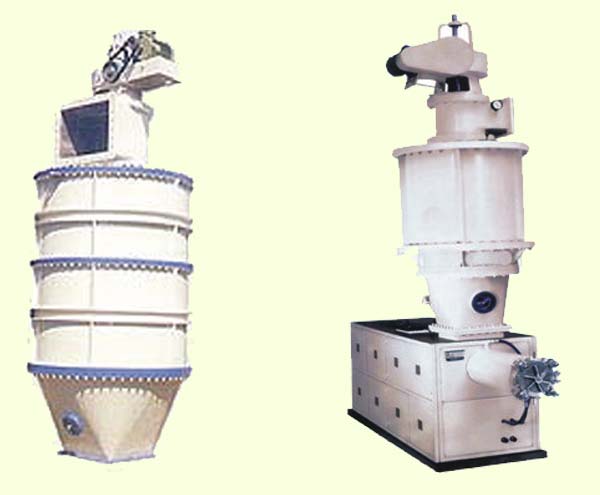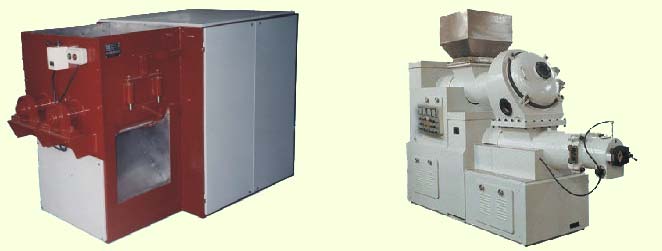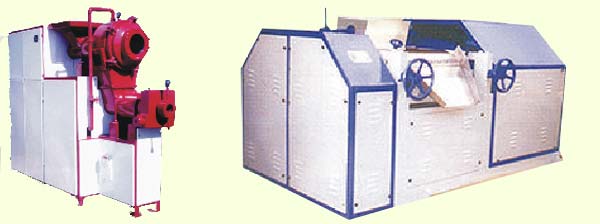Laundry, Toilet Soap Plant & Detergent Powder Plants
We are the sole manufacturers & turn key project supliers for soap industry.
Spectec provides wide range of soap manufactureing plants & machineries.
We provides machineries for - Laundry soap, Toilet soap, Laundry bar, Detergent power.
Benifites for using our machienries - Simple operation, Easy maintenance, Less civil work, Convinent shifting, Minimum capital investment, Less manpower, Less power consumption, Compact design, standard product quality.
Laundry Soap Plants
SPECTEC offers a wide range of LAUNDRY Soap Making Plant, with the latest technologies & machineries on turnkey basis. SPECTECs quality machineries, skilled & experience project management ensures best product quality,best productivity & efficiency from the day one of installation Capacities -100 kg/hr to 2000 kg/hr.
General process of Laundry Soap Making is derived in following steps - Saponification, Drying, Bar Cutting, Cake Cutting, Stamping.
Basically the process classified into two sections. In the first section reaction of variety of oils & fats takes place with alkali. Crude soap with moisture obtained from this section if further processed for finishing.
Toilet Soap Plants
SPECTEC offers a wide range of TOILET Soap Making Plant, with the latest technologies & machineries on turnkey basis. SPECTECs quality machineries, skilled & experience project management ensures best product quality, best productivity & efficiency from the day one of installation. Capacities - 100 kg/hr to 2000 kg/hr. General process of TOILET Soap Making is derived in following steps - Saponification, Drying, Mixing, Plodding, Roller Mill, Vacuum Plodder, Bar Cutting, Cake Cutting, Stamping.
Basically the process classified into two sections. In the first section reaction of variety of oils & fats takes place with alkali. Crude soap with moisture obtained from this section is now taken in second section which consists of finishing of soap by mixing in mixer, milling on triple roller mill, extruding under pressure to form bars and finally stamping of soap to desired shape and size.
Process Description
General raw materials for soaps are oils & fatty acid. Oils are mixtures of triglycerids and when this reacts with alkali the residual will be sodium salts of fatty acid and glycerin. Generally blend of hard & soft oils are used for soap making.
There are verios saponification process like
- Cold Process - where reaction takes place in room temperature, but this process is not suitable for all the oils
- Semi Boiled Process - in this glycerin is retained in the soap stock, which simplifies the process
- Full Boiled Saponification Process
In Full Boiled Saponification process brine is added for graining out the soap mixture. This mixture is then setteled for the formation of different layers. Top layer will be soap and bottom is spent lye & glycerin. Bottom layer is drained out and soap is further boiled and washed with hot water, alkali is getting added for saponifying unsap fatty matters. Mostfavorate raw material for soap making is fatty acid. Which further simplifies the process because of less heat, alkali, time & power consumption.
Drying Section
Soap stock obtained from saponification process contains very high moisture, which has to be removed for further processing. For small capacity plants drying happens in open yard or oven after chipping the soap into pieces.
Sigma Mixer
SPECTECs specially designed SIGMA MIXER gives fast & homogeneous mixing and cutting of soap noodles. Sigma Mixer is used for mixing soap noodles or chips with perfume, color and other additives. Double shaft Sigma Mixer has specially designed Z shaped blades which are rotating at different speed & direction, which ensures maximum efficiency and homogenization. Mixed materials after mixing are removed from bottom discharge mechanism or by tilting the mixture. The shaft is mounted on heavy duty bearings. The mixing machine is lined with thick sheet of stainless steel. Supporting structure is made from mild steel angles, channels and flats. The mixture is driven by gearbox.
Soap Plodder/ Exstruder
Mixed soap from Sigma Mixer enters to the Soap Plodder / Exstruder through the feed hopper. Plodder is nothing but a mechanical Binder, which mechanism is designed in such a way that it bindes a mixed soap by pressing action.
Roller Mill
Roller mill is one of the important machine in the soap making process which makes the soap more homogeneous, free from grainy appearance, and transparent. It has three horizontal rolls so commonly called as Three Roller Mill. All rolls are rotating with different speed & at different directions because of which Soap Rubbing action takes place rather than crushing, with better milling efficiency.
Adjustable roller arrangement allows the gap adjustment between the rolls for required film thickness of the soap. Mixed soap is fed to the slower pair of the roll and carried to the next pair, thus milling happens twice in single machine. Adjustable scrapers continuously removes the film sticking to the rolls. Collecting cute is provided at the bottom for collecting spilled materials, which is then recalculated. Rolls are specially hardened and chrome plated so as to allow maximum wear resistance. Rolls are mounted in self aligning spherical roller bearings, also provided with cold water circulation in each roll so as to remove the generated because of rubbing action.
Duplex Plodder
Duplex Plodder is a part of finishing line which extrudes the soap suitable for stamping. The extruder screw of top noodle plodder takes the milled soap ribbons of soap from hopper and presses the soap as it tries to pass through noodle plate. There is a rotating knife which cuts the noodles as they come out of the noodle plate. The noodles fall in the vacuum chamber. The screw of the bottom screw binds the soap noodles under vacuum as the soap mass comes out under pressure from the mouth of the cone through the die.
